Fall 2024: Installation is now pushed back to the long shutdown, so we can work inside the magnet, since the beampipe will be removed.
This means rolling in on rails will not be necessary.
- Bars can be 5×5 mm square.
- Angular placement optimization of each panel suggest we can shingle them, reducing
a coverage gap between MS and Scfi, and eliminating MS dead space between panels.
| 
|
The red lines show the acceptance of SciFi, defined by the target at (0,0)
and the rectangular frame at the exit of the magnet.
The green lines are the front and back magnet iron faces
The blue lines define where the magnet brackets protrude into the magnet space.
The blue squared are the tips of the frontmost and back coil brackets.
So our panels have to fit between the blue and red lines. Two are shown in yellow, angled to be
roughly normal to the incoming tracks
| 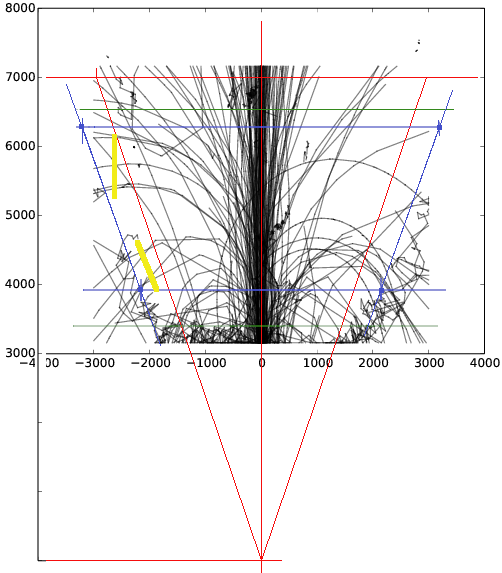
|
This is a 3D view of these constraints. The blue line goes through
the tips of the magnet support brackets, and defines how far
back we can go. The frame (red) limits how far out we can go
and stay out of the SciFi acceptance.
Imagine a plane through the blue line, tilted at a ~17° angle.
This angle is chosen so that
a normal to this plane, about halfway in z, intersects the beam
pipe. Therefore tracks have a rougly normal
incidence to the plane in the xy direction. This simplifies
and optimizes resolution in the y direction, parallel
to the scintillator bars.
| 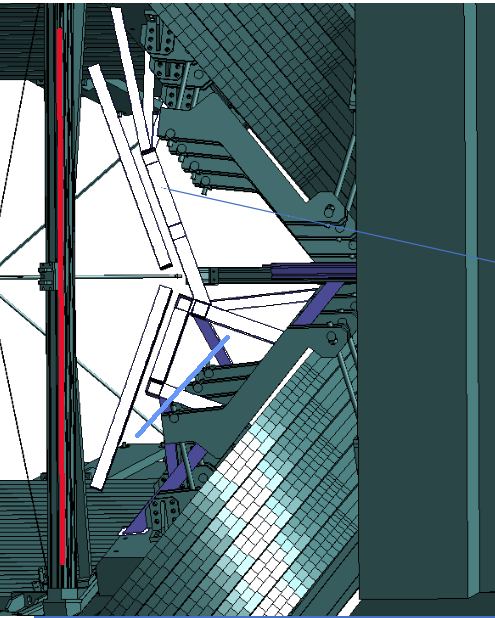
|
A 'master frame' is constructed in this 17° tilted plane. The 8x8 horizontal
beams sit on the back of this plane (maybe slightly forward of it),
with the cross members avoiding the brackets. The volume to the left
of the master frame is now the maximum available for lighter
secondary frames,
one for each panel. The secondary frames can have compound angles.

|
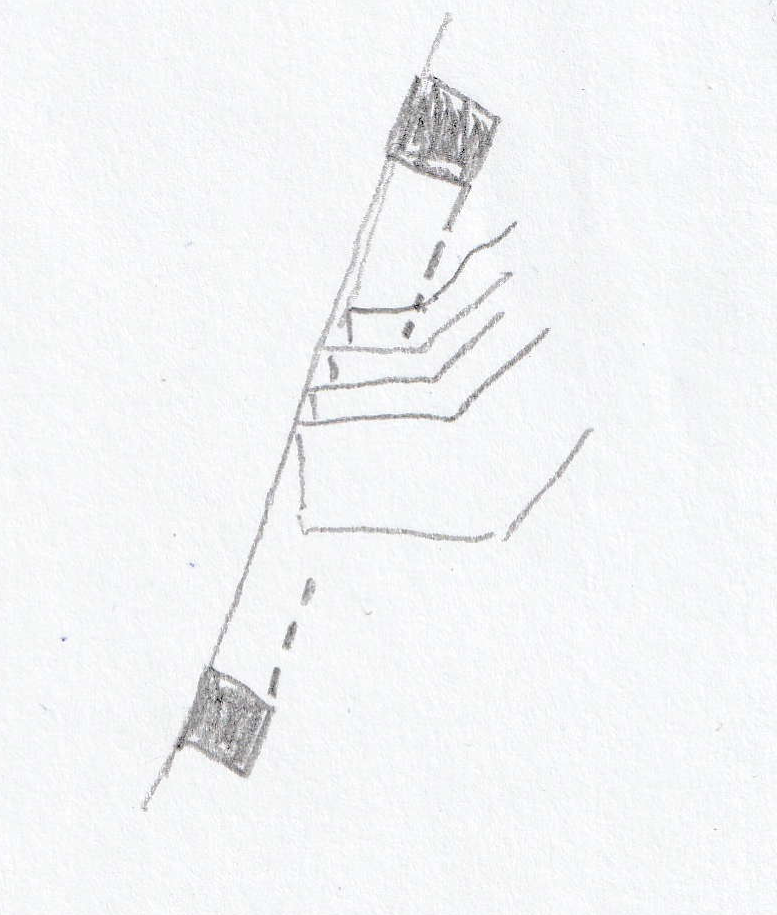
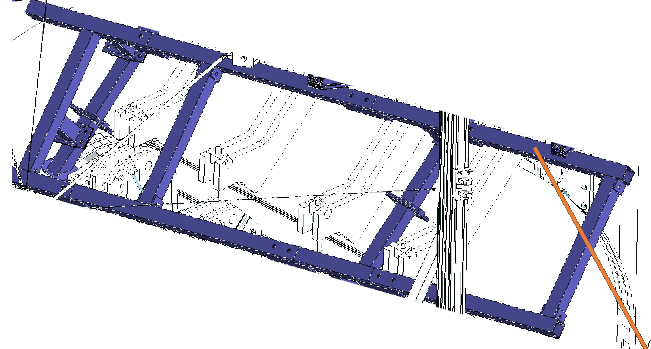
|
| The secondary frames allow 'shingling' of the panels, eliminating
dead space
| 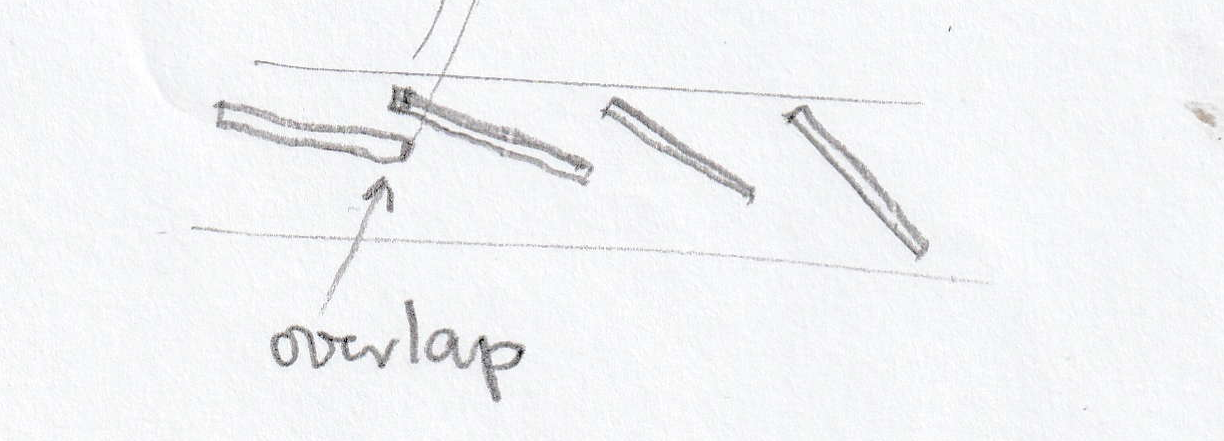
|
| In order to have tracks mostly perpendicular to the module
faces, panels closer to the target are tipped over more, while
downstream, planes are rotated around the vertical axis more.
| 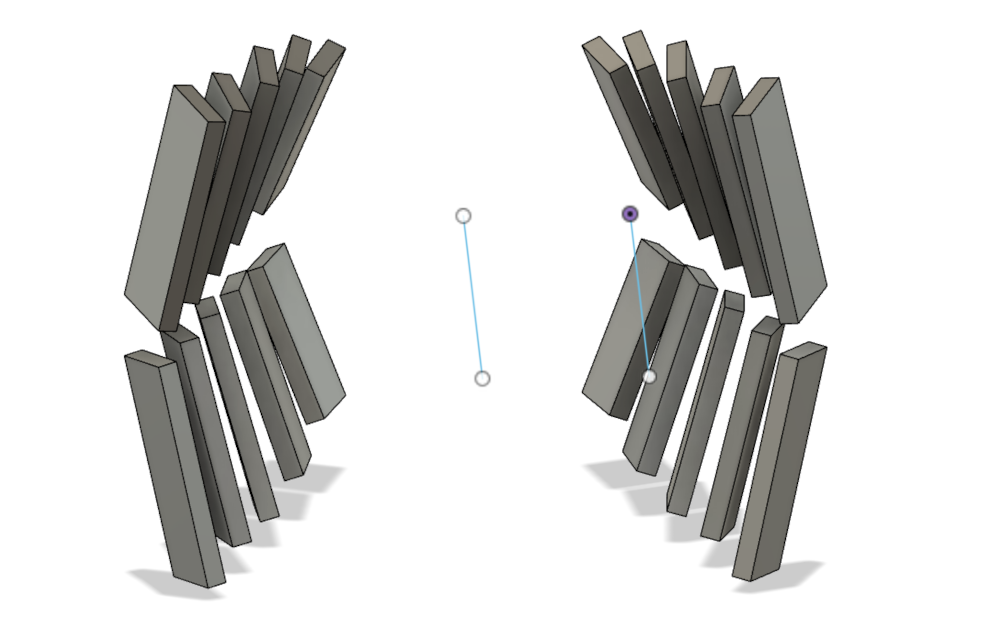
|